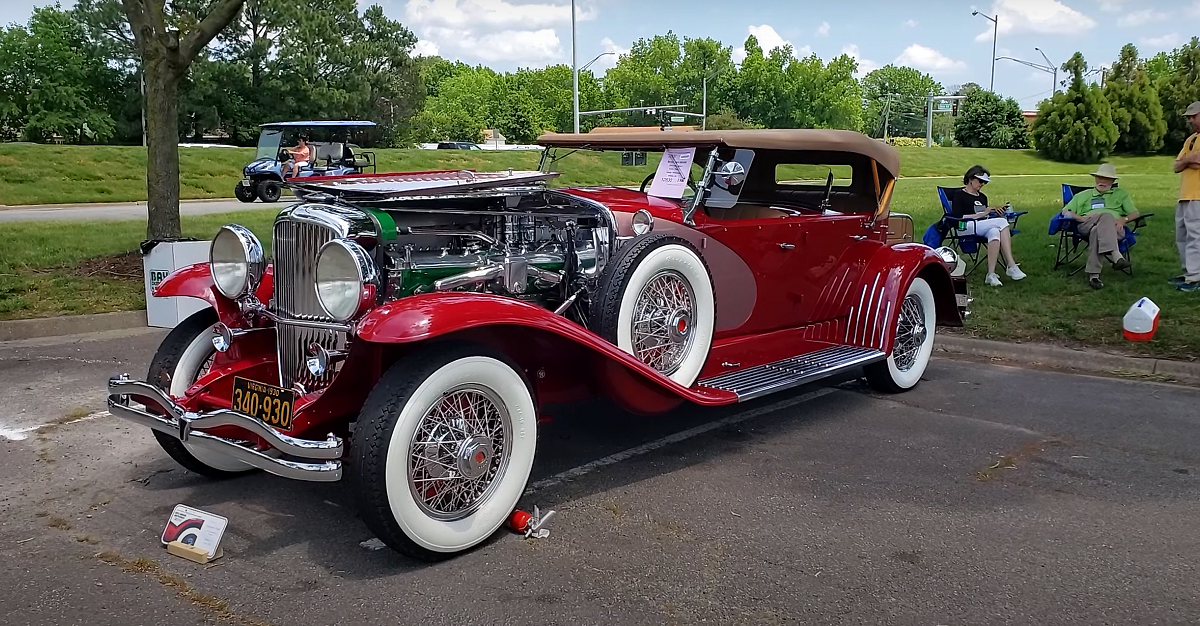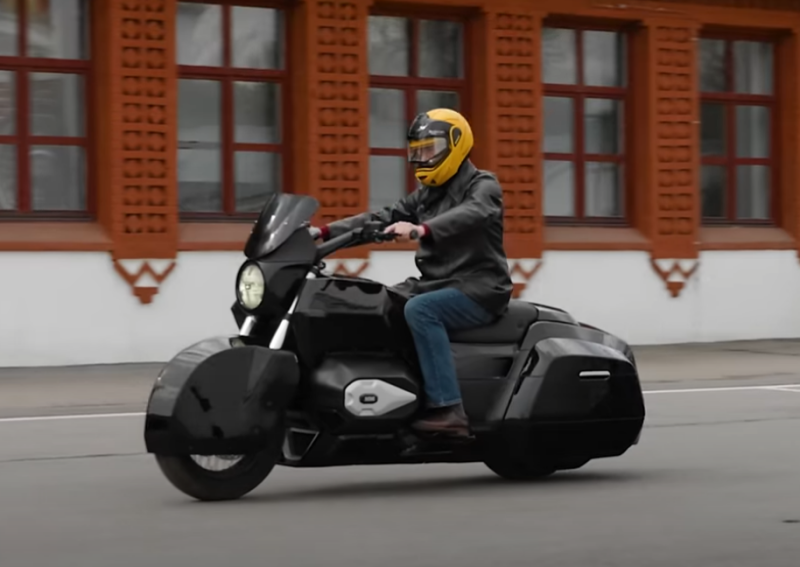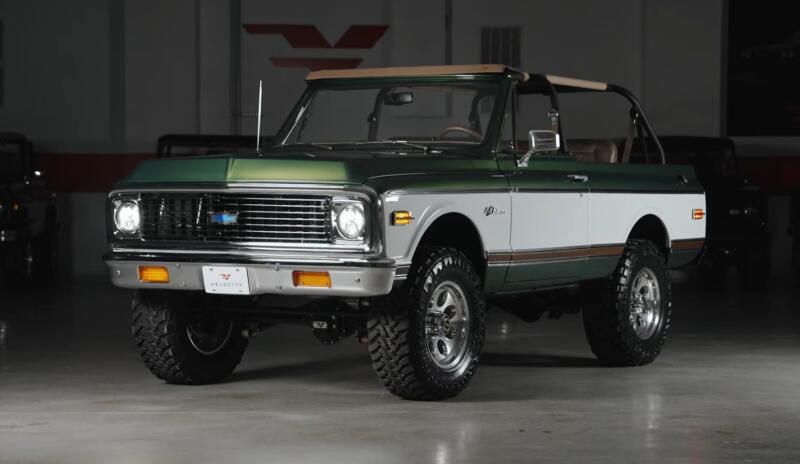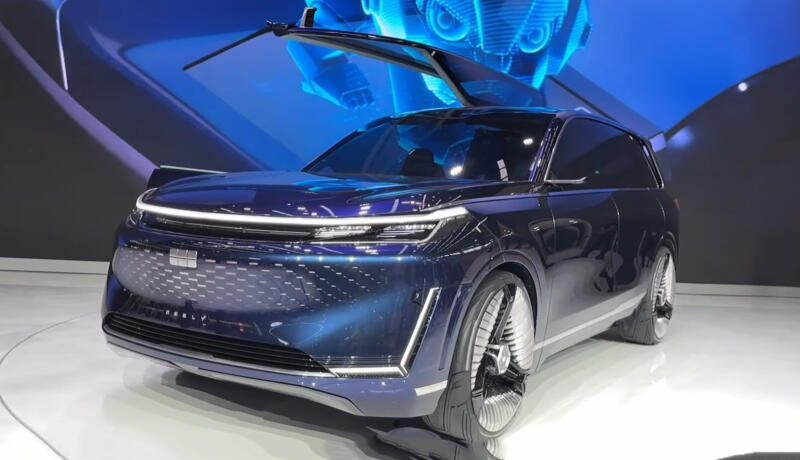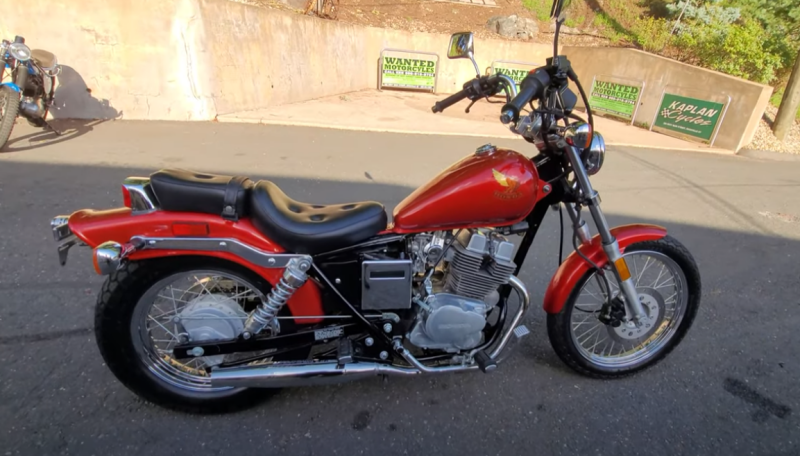Brothers August and Fred Duesenberg were perfectionists and world-class engineers, but this did not save the company from financial problems. The Duesenberg Model A, which became the brand's first production car, was considered an advanced design (hydraulic brakes and an overhead camshaft), but did not sell well. Ultimately, the firm went bankrupt. However, successes on the racing tracks (victories in the Indy 500 in 1924-25) brought the brothers not only fame, but also attracted the attention of magnate Erret Loban Kord.
 Duesenberg Model J 1929. Photo: Youtube.com
Duesenberg Model J 1929. Photo: Youtube.comBuying out Duesenberg Inc. in bankruptcy court, Kord decided to revive the brand. The first step in returning to the Olympus was the commission to develop a grand touring chassis that could become an American alternative to Rolls-Royce, Hispano-Suiza, Isotta-Fraschini and Mercedes-Benz and Minerva. The terms of reference were as follows: make the best car in the world, and don't worry about the costs! The result was the Duesenberg Model J.
Korda era
On December 1, 1928, at the New York Auto Show, the car appeared before the public. The first impression of the new Duesenberg turned out to be extremely favorable, because judging by the loud numbers of technical characteristics, Kord was going to produce the fastest and most productive American passenger car!
✅ Engine - inline "eight" Lycoming
✅ Gas distribution mechanism - DOHC, with 4 valves per cylinder
✅ Fuel supply - two-barrel Schebler carburetor
✅ Working volume - 6.9 liters
✅ Power - 265 horses, at 4200 rpm
✅ Torque - 507 N * m, at 2000 rpm
✅ Curb weight - 2390 kg
✅ Maximum speed - 190 km / h
✅ Acceleration to "hundreds" - 13 seconds
The claimed power of the Fred Duesenberg-designed engine was more than double the previous industry record set by Chrysler! And although evil tongues assured that in reality the performance was closer to the 200 horse mark, it turned out that Duesenberg was not deceiving. In particular, John Bond, the founder of Road & Track, was firmly convinced that Lycoming was producing 245-250 hp. s, at 4250 rpm.
 Corrugated exhaust pipes are a sign of the "charged" Model SJ. Photo: Youtube.com
Corrugated exhaust pipes are a sign of the "charged" Model SJ. Photo: Youtube.com The modified unit, with a supercharger and a compression ratio increased to 8.0: 1, developed 400 horses at all. It should be noted that the torque indicators were no less impressive, because the engine gave out 454 N * m already from idle speed! But forget about horsepower and consider other features of the engine.
The pinnacle of technological progress
Back in the days when side valves (SVs) were considered "typical" and under-engines (OHVs) "modern", the Model J was equipped with an overhead camshaft - and not one, but two! Accordingly, there were four valves in each cylinder, and their total number was 32 pieces. The engine was painted in bright green enamel, with nickel, chrome and stainless steel trim added.
In the automotive industry of the 30s, light alloys were a rarity: aviation was considered their main area of application. But Duesenberg used aluminum extensively for the engine: in the timing chain cover, water pump, intake manifold. And also in the differential and flywheel housings, brakes and even the gas tank. Thus, despite its impressive size, Model J weighed less than 2.4 tons, which means that each “horse” dragged about 10 kilograms of curb weight.
 The engines were manufactured by Lycoming, part of the Korda empire. Photo: Youtube.com
The engines were manufactured by Lycoming, part of the Korda empire. Photo: Youtube.comWith such a “charge”, Duesenberg developed a stunning speed: up to 190 km / h, previously available, perhaps, only to aircraft and racing cars! But accelerating is half the battle, it is equally important to be able to stop. And with that, Dueseberg was all right! Three-mode (dry, wet, snow) adjustable from the driver's seat drum brakes were equipped with a hydraulic drive with a vacuum booster.
Curious "chips"
In terms of interior trim, the interiors were not only luxurious, but also functional. For example, the instrument panel included a speedometer, tachometer, ammeter, water temperature and oil pressure gauges, as well as a clock with a stopwatch, altimeter and barometer. Warning light signals onboard "arithmometer" reminded the owner, for example, of the need to change the engine oil, or add water to the battery. It was also probably unusual for motorists of those years that there was no need to “syringe” the car, since this procedure was carried out automatically.
 Dashboard Duesenberg Model SJ. Photo: Youtube.com
Dashboard Duesenberg Model SJ. Photo: Youtube.comSuch meticulous attention to detail was typical of Fred Duesenberg in his pursuit of perfection. And also to ensure that Duesenberg cars are considered the best in the world in every respect.
The inner world of Duesenberg
The bodies fitted to the Model J are as beautiful as the chassis. After all, these were luxury "carriages" made with only the finest woods, fabrics and leathers! For Duesenberg, cosmetic bags, radios, minibars and rear-dashboards were commonplace. Less common were “taunkars” with silk upholstery and silver and ivory fittings, and one car even received elements of gold! Thus, despite the characteristics of the "hypercar", in the first place, customers expected super-luxury from the Model J.
Clearly, Erret Kord was only targeting those rich enough to afford "the best car in the world." Also, don't forget that for $8 you didn't buy a finished car, but a chassis! The cost of the cheapest convertible coupe Walter M Murphy was already at least 500 thousand. But most finished Model Js sold for $13, in some cases as high as $17. An amount equal to the price of fifty Ford A!
The Great Gatsby and more...
By the way, who even bought such expensive cars? Well, only 1929 J, JN and SJ chassis were built from 1936 to 481, so the clientele was exclusive! For example, Greta Garbo, Clark Gable and Gary Cooper. And although Al Capone drove an armored Cadillac, in 1931 the famous mafia acquired Duesenberg. True, not for himself, but for the Hollywood silent film star Gladys Walton.
 In fact, two replicas were filmed in the film, not the real Duesenberg. Photo: Youtube.com
In fact, two replicas were filmed in the film, not the real Duesenberg. Photo: Youtube.comSpeaking of "dream factory"! In 2013, The Great Gatsby was released, starring Leonardo DiCaprio. Among other things, the film shows footage showing how famously the mysterious millionaire cuts through the Duesenberg Model J. But in reality, this simply could not be! After all, the action of the novel takes place in 1922, and Model J debuts 7 years later - in the 29th. And the Gatsby car itself is a “fake”. A replica with a fiberglass body and a Ford V8 engine was created in Wisconsin in 1983.
Modern prices
Today's Model J prices are sky high, and each copy is valued at a fortune. Last month, Mecum sold Duesenberg for $2! But that's a far cry from the record set four years ago when Gary Cooper's SSJ went under the hammer for $450 million at a Pebble Beach classic car auction.
 The same Duesenberg Cooper. Photo: Youtube.com
The same Duesenberg Cooper. Photo: Youtube.comThe Duesenberg J is, without a doubt, unique. Not only as a symbol of technological progress and prestige, or an insane price, but also as a fast car with a stylish appearance and an impressive historical context! Unfortunately, the Great Depression and the subsequent tragic death of Fred Duesenberg hit the company hard, and in 1937 the company, by decision of Errett Kord, ceased operations.
